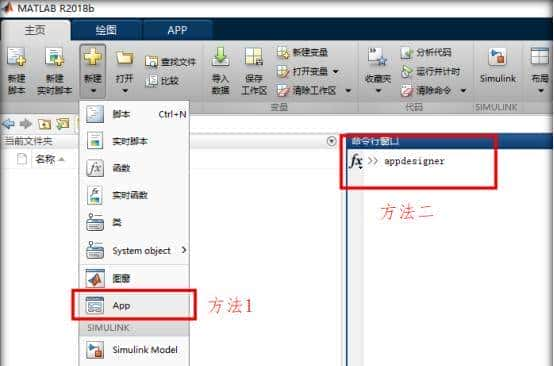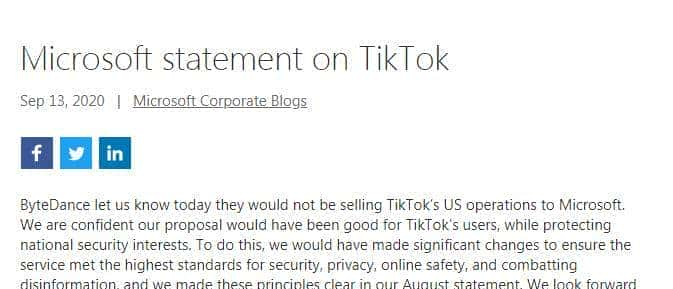关键讨论点
比特币 10 周年相关讨论:课程以比特币 10 周年(部分观点认为是 “纪念日” 而非 “生日”)为切入点,分享核心数据(当时价格约 6300 美元、市值 1100 亿美元、已开采 1730 万枚、日交易量 25 万笔、算力较 2009 年提升 7 万亿倍,消耗全球约 0.33% 电力),并引导学生预测 10 年后比特币价格 / 市值(约 60%-65% 学生认为会上涨,35% 认为会下跌)。支付系统核心痛点:师生共同梳理传统支付系统问题,包括中介层级多(导致多账本需对账)、成本高(美国信用卡交易手续费约 2.75%,占全球 GDP 0.5%-1%)、结算延迟(商户端常需数天完成最终结算)、拒付争议(消费者需维权 vs 商户需交易终局性)、金融包容性低(全球 17 亿人无银行账户)、隐私泄露(支付链各方可获取用户消费数据)、网络安全与身份盗窃风险。区块链在支付中的适用性与挑战:
适用性:支付系统本质是 “账本操作”,与区块链 “不可篡改账本”“多主体共识” 契合,可降低验证成本;支持智能合约(如自动条件支付),拓展支付功能。挑战:可扩展性差(交易速度慢、成本高)、互操作性不足、错误难以修正(不可篡改特性导致失误无法回滚)、监管合规(反洗钱 / KYC 要求)、 volatility(加密货币价格波动影响支付稳定性)。
区块链支付案例与实践:包括零售端(BitPay,为商户提供比特币 – 法币转换服务,手续费 1%)、机构端(Ripple 的 XRapid,通过 XRP 作为跨境支付桥接货币;JP Morgan 的 Quorum、R3 联盟)、实验性场景(MIT 媒体实验室的比特币自动售货机,支持比特币、莱特币与稳定币支付)。跨境支付的区块链解决方案:传统跨境支付依赖代理银行(集中化、成本高、周期长),区块链可通过 “法币 – 加密货币 – 法币” 的桥接模式减少中介,但需解决双端兑换成本(双向买卖价差)、 volatility(需稳定币)、流动性(小额汇款 vs 大额企业资金需求差异)。辩论:传统系统 vs 区块链:MasterCard 嘉宾 Shree 认为传统系统可通过优化(如印度 UPI)满足需求,无需区块链;Alin(DCI)则认为区块链可提供 “终局性支付”“智能合约” 等传统系统缺失的功能,且能推动金融包容性。
主题摘要
本课程是 MIT《区块链与货币》的第十四课 “支付(第二部分)”,授课教师 Gary Gensler 以 “比特币 10 周年” 为引子,围绕 “区块链能否解决传统支付系统痛点” 展开深入讨论。课程先通过比特币核心数据(价格、算力、用户规模)引发学生对加密货币未来的思考;接着引导师生梳理传统支付系统的多重痛点(高成本、慢结算、低包容等),随后分析区块链的适配性(契合账本属性、降低验证成本)与现实挑战(可扩展性、错误修正难);通过 BitPay、Ripple 等案例,展示区块链在支付中的落地现状;邀请 MasterCard 嘉宾 Shree 参与辩论,对比 “传统系统优化” 与 “区块链创新” 的路径差异;最后聚焦跨境支付场景,探讨区块链 “桥接货币” 模式的潜力与问题(volatility、流动性),并预告下节课将围绕 “央行数字货币” 展开,强调课程核心目标是帮助学生掌握 “何时需用区块链(不可篡改账本 + 多主体共识)” 的批判性思维。

参与者的主要观点
授课教师 Gary Gensler:
比特币价值判断:认为比特币 10 年发展成果显著(从无到市值 1100 亿美元),但未来价格不确定,鼓励学生从 “市值” 而非 “单价” 预测(因代币总量固定但可能分叉)。区块链核心价值:区块链的核心是 “降低验证成本与网络成本”,支付系统是其 “天然应用场景”(依赖账本、多主体协作),但需结合实际场景(如跨境小额汇款更易落地,大额企业支付需解决流动性)。行业趋势:传统支付系统正逐步优化(如美国美联储推进 2020 年实时支付),区块链可能成为 “催化剂”(如推动 Swift 升级),而非完全替代者;稳定币或成跨境支付关键(解决 volatility 问题)。
学生群体:
比特币未来:约 60%-65% 认为 10 年后价格 / 市值上涨,35% 认为下跌,部分学生指出 “需关注市值而非单价”(总量固定)、“可能因分叉进化为新形态”。支付痛点:提出 “拒付对商户不公”“跨境支付周末无法交易”“小额汇款成本高(西联汇款约 8%-10%)” 等细节问题,质疑区块链 “双端兑换成本”“错误无法回滚” 的可行性。区块链应用:支持区块链在金融包容性场景的应用(如无银行账户地区用手机钱包交易),但担忧 “最后一公里流动性”(加密货币无法在本地商店直接消费)。
嘉宾 Shree(MasterCard 产品经理,Priya 配偶):
传统系统立场:认为传统支付系统可通过技术优化(如印度 UPI、美国实时支付)解决痛点,无需区块链;区块链 “不可篡改”“去中心化” 的优势,传统系统(如集中式账本 + 加密技术)也能实现。核心反对理由:区块链落地需突破 “接受度与规模”(传统系统 40 年才建成生态),且规模化后成本会上升;现有系统在 “安全性”“稳定性” 上已成熟,区块链的创新收益不足以覆盖替代成本。
嘉宾 Alin(MIT 媒体实验室 DCI 成员):
区块链创新价值:强调区块链的 “智能合约” 可实现传统系统无法完成的功能(如三年工资自动分期支付、条件触发转账),且能提供 “交易终局性”,满足商户需求。落地路径:认为区块链无需完全替代传统系统,可作为 “补充方案”(如媒体实验室的比特币自动售货机),针对传统系统覆盖不到的场景(无银行账户地区、跨境小额汇款)发力。
重要的时间节点或里程碑
比特币 10 周年:课程讨论时为比特币诞生 10 周年,当时价格约 6300 美元,市值 1100 亿美元,已开采 1730 万枚,全球节点约 1 万个,50 万个独特地址(推测 2000-3000 万人通过交易所持有比特币)。美国实时支付计划:美国美联储计划 2020 年推出实时支付系统,教师提及可能因落地难度延至 2021 年。课程后续安排:
下周二(选举日):讲解央行数字货币(分两节课)。两周后(11 月 15 日):邀请 Jeff Sprecher(洲际交易所)、Kelly Loeffler(纽约证券交易所)讲解零售支付系统。
行业案例时间:
2016 年:Visa 推出 B2B 支付系统 “Visa Connect”,但 adoption 率低。课程当时:Bitmain(比特币矿机厂商)正推进 IPO,计划拓展 AI 芯片业务;Ripple 的 XRapid 已落地部分银行,用于跨境支付测试。
后续行动计划
课程层面:
下周二(选举日):聚焦央行数字货币,分析各国实践(如瑞典 eKrona、加拿大 Jasper 项目、中国探索),讨论央行数字货币与私人稳定币的竞争与协作。11 月 15 日:邀请行业嘉宾讲解零售支付系统,探讨区块链在零售场景的落地难点(如商户接受度、消费者习惯)。后续课程:深入讨论 “稳定币在跨境支付的应用”“区块链支付的监管框架”,结合学生期末项目展开案例分析。
实践建议:
学生可实地考察 MIT 媒体实验室的比特币自动售货机(支持比特币、莱特币、稳定币支付),直观感受区块链支付流程。关注 Ripple、BitPay 的最新动态,分析其在跨境支付、商户服务中的落地数据,为期末项目提供案例支撑。
正文
今天我们进入 “支付” 主题的第二部分,先简要回顾,再展开讨论。按照惯例,先问候大家 —— 有人能说说昨天是什么日子吗?Kelly?
Kelly(学生):比特币 10 周年。
Gary Gensler:没错,比特币 10 周年。还有人觉得是什么日子吗?万圣节?不是我的生日,Tom 别闹了。关于这个 “纪念日”,该叫 “生日” 还是 “周年” 呢?有人觉得是 “周年”,有人觉得是 “生日”—— 这个领域还没有统一说法。Hugo,你为什么觉得 “生日” 更合适?
Hugo(学生):“生日” 标志着起点,但 Rahim 说 “诞生” 也隐含 “终结” 的意味,所以她觉得 “周年” 更稳妥。
Gary Gensler:确实,Rahim 更倾向 “周年”,但也有人支持 “生日”。我们先轻松聊聊这个 “存在性话题”,再切入支付系统的痛点 —— 大家觉得传统支付系统有哪些痛点?我会列出一些,但你们的想法更重要。接着探讨 “区块链如何适配支付系统”,以及 “为何至今没有出现全行业级的区块链支付应用”—— 甚至可以思考 “区块链自身有哪些痛点导致难以普及”。最后会介绍几家区块链支付公司(其实不多,白皮书很多,但真正落地的少),并总结收尾。
课后的研究问题(我们之后再深入)包括:从现有案例中能学到什么?Layer 2(第二层解决方案)能否助力?跨境支付有哪些机会?许可制与无许可制系统的权衡是什么?
先祝比特币 “周年快乐”(或 “生日快乐”)。10 年前的今天(有人认为是 11 月 1 日,因部分地区的网站上线时间是 11 月 1 日),比特币诞生,如今已发展成规模不小的资产 —— 当前价格约 6300 美元,市值 1100 亿美元。这是个有趣的练习:大家拿出纸或在电脑上记下来,预测 10 年后(比特币 20 周年时)的价格,10 年后再回看,或许会笑自己当初的判断。不用告诉我,只需要自己记录 ——Alin,你不想预测吗?没关系,但一定要思考 “10 年后它会是什么样子”。这是个难题。
学生(台下):我们在争论 “方向”—— 是涨还是跌。
Gary Gensler:Alpha,你愿意和全班分享你的预测吗?不用具体数字,只说方向也行。现在举手投票:觉得 10 年后价格会下跌的请举手?约 35%。觉得会上涨的?约 60%-65%。Alin 你说 “会跌到 0”,确实算 “下跌”。但也有人说 “10 年后系统可能大变,甚至不能再叫比特币”—— 有道理,它可能进化成其他形态。后排那位同学,你有补充吗?
学生(后排):我觉得该预测 “市值” 而非 “价格”—— 因为价格取决于代币数量,而挖矿机制、分叉都会影响数量。比如比特币总量固定,但如果分叉,数量就会变化。
Gary Gensler:非常好,如果你要记录,建议写 “市值” 而非 “价格”——Alin 即便认为会跌到 0,市值和价格也会同步归零。还有人想反驳 “会跌到 0” 的观点吗?
学生:我觉得价格里会有 “0”,但不一定是归零。
Gary Gensler:Hugo,你怎么看?
Hugo(学生):比特币的代币数量是写在代码里的,10 年后的数量是确定的,对吧?
Gary Gensler:Isaac,你有不同意见吗?
Isaac(学生):有两点:一是挖矿 —— 矿工的资源投入取决于价格,价格低可能导致挖矿减少;二是交易量 —— 如果市场受限(比如类似中国的大盘股交易),价格可能失真。
Gary Gensler:我同意这两点,还有一个原因:人们可能停止挖矿 —— 如果 5 年后价格归零,没人会再投入算力。另外,Shimon 提到的 “分叉” 也可能改变规则:只要 51% 的节点达成共识,就能修改货币政策(比如以太坊曾两次调整区块奖励,从 5 个减到 3 个,再到 2 个,这并非最初的设定)。所以 “代码固定” 不代表永远不变,可能通过分叉或共识调整规则。
再分享一些比特币的关键数据:目前已开采 1730 万枚,约 55 万个区块,账本大小 189GB,日交易量 25 万笔,算力约为 2009 年的 7 万亿倍(计算难度提升 7 万亿倍),消耗全球约 0.33% 的电力 —— 昨晚课程讨论区有同学争论 “这是否合理”,确实存在争议。
还有 “独特地址”:目前比特币独特地址约 50 万个,但据估算有 2000-3000 万人持有比特币 —— 这说明什么?这些人没有自己的比特币地址,而是通过交易所或托管平台持有(James 说得对,就是 “交易所托管”)。全球约 1 万个节点(可在 Bitnodes 网站查看分布),分布较广,但埃塞俄比亚暂无节点,肯尼亚只有 2 个。有人来自格陵兰吗?没有。
比特币还催生了整个生态:ICO(首次代币发行)已募集约 280 亿美元(数据可能有误差),说明当前有大量资本涌入这个领域。大家觉得 10 年后 ICO 还会存在吗?举手投票:认为会存在的约一半,另一半不确定。我个人认为 2019-2020 年 ICO 会降温 —— 很多项目会失败,市场会更理性,要求更完善的商业模式。目前有 1600 种山寨币(altcoins),可能 1500 多种会失败,甚至全部失败。
crypto 金融的波动性也在降低,稳定币逐渐出现 —— 但 6 个月的数据不足以证明 “波动性已消失”,未来仍可能反弹。如果比特币价格长期稳定,或许会有更多支付场景采用,但目前还不能下结论。
回到支付系统 —— 这张图表(指课件)是我们周二见过的,左侧是消费者,右侧是商户,以美国模式为例,其他国家也类似。大家觉得区块链能解决这个复杂系统中的哪些痛点?Brodish,你来说说。
Brodish(学生):中介太多,导致多本并行账本,需要对账,增加成本和风险。
Gary Gensler:还有吗?
学生:成本高 —— 世界银行估算支付系统成本占全球 GDP 的 0.5%-1%,约 4000-8000 亿美元 / 年。
Gary Gensler:Zon,你有补充吗?
Zon(学生):结算速度慢 —— 消费者看似实时到账,但商户端可能需要几天才能完成最终结算,存在 “双速市场”。
Gary Gensler:Ian,你呢?
Ian(学生):金融包容性差 —— 没有银行账户的人,很难进入这个系统,流程太复杂。
Gary Gensler:总结一下:成本高、商户端结算延迟、金融包容性低、中介多(多账本对账成本)。Sean,你还有其他痛点吗?
Sean(学生):跨境支付的实时外汇结算 —— 比如从美元换成俄罗斯卢布,需要从美元账本切换到卢布账本,传统方式太慢。
Gary Gensler:没错,跨境支付本质是 “账本切换”。我补充一点:没人提到 “拒付”(chargebacks)—— 为什么商户对拒付不满?这是美国特有的问题吗,Brodish?
Brodish(学生):上节课提到,美国信用卡交易每 100 美元有 2.75 美元分给中介(如发卡行),但拒付导致 “交易没有终局性”。比如竞选团队收到捐款后,可能被 donor 以 “欺诈” 为由拒付,需要退回资金,商户无法确定 “钱是否真的到账”。
Gary Gensler:Jack,你从消费者角度说说?
Jack(学生):拒付也是消费者的保障 —— 比如没收到商品或服务,就可以 dispute。如果交易有终局性,消费者可能不敢轻易付款。
Gary Gensler:Dan 和 Jack 正好代表了双方:商户要 “终局性”,消费者要 “拒付权”。美国的 2.75% 手续费中,就包含了拒付处理的成本,但商户仍希望取消拒付。其他痛点还有欺诈、隐私泄露(支付链上的所有方都能获取用户消费数据,甚至判断用户偏好)、网络安全与身份盗窃(Rahim 提到的)。
有了这些痛点,问题来了:区块链能解决哪些?先回顾区块链的核心优势 —— 大家常听我提的,来自 Christian Catalini 的论文:降低 “验证成本” 和 “网络成本”。这两点能否解决上述痛点(包括网络安全)?Alin,你有补充吗?
Alin(学生):区块链可能解决部分问题,但也会带来新问题 —— 需要权衡 “解决的问题” 和 “新增的问题”,看净收益是否为正。
Gary Gensler:你提前说到了我要讲的 “挑战”—— 你觉得会新增哪些问题?
Alin(学生):可扩展性差(交易慢、成本高)、互操作性不足(不同区块链无法互通)。
Gary Gensler:Brodish,你还有补充吗?
Brodish(学生):错误无法修正 —— 区块链不可篡改,一旦转错账或出现系统错误,没法回滚。
Gary Gensler:Stephanie,你呢?
Stephanie(学生):还有监管问题 —— 反洗钱(AML)、了解你的客户(KYC)要求,区块链的匿名性可能冲突。
Gary Gensler:Shimon,你有不同观点吗?
Shimon(学生):传统系统的延迟结算可能是 “故意设计” 的 —— 比如为了防范欺诈、处理错误,区块链的实时终局性可能会增加风险,比如欺诈资金无法追回。
Gary Gensler:有人想反驳吗?Alin,你来说。
Alin(学生):我承认传统系统的延迟有价值,但不能因此停留在 “低效系统”—— 可以同时存在两种方案:想要延迟结算的用传统系统,想要实时终局性的用区块链。没必要用 “传统系统的优势” 否定区块链的创新。
Gary Gensler:Alin 坦言自己有偏见(他在数字货币计划工作,前支付行业从业者),但观点很有道理 —— 不需要非此即彼,可并行存在。Eric,你有补充吗?
Eric(学生):治理问题 —— 比如以太坊通过分叉解决盗窃事件,但分布式治理比集中式治理更复杂,传统系统改规则更简单。
Gary Gensler:John,你呢?
John(学生):还有流动性管理 —— 企业大额支付对速度要求高,但实时交易可能导致流动性不足,存在机会成本。
Gary Gensler:这个问题我们之后再聊,尤其是 “加密货币作为跨境桥接货币时的流动性”—— 和波动性有关。回到 Shimon 和 Alin 的辩论:技术确实能缩短结算时间,传统金融也在进步 —— 比如证券结算,以前是 T+5(交易后 5 天),后来欧洲改成 T+2,美国也跟进了。现在技术能支持 T+0(实时结算),美国美联储也在征求公众意见,计划 2020 年推出实时支付系统(可能延至 2021 年)。
但市场习惯也很重要 —— 比如证券做空,依赖延迟结算(先卖后借),如果改成实时结算,做空机制需要调整。但区块链能实现 “证券借贷实时记录”,理论上可支持 T+0 做空 —— 技术可行,但市场是否接受?
Dan(要终局性)和 Alin(要创新)站一边,Shimon(要延迟)站另一边。我认为:部分市场会倾向终局性(如小额零售),部分会保留延迟(如大额证券),区块链让 “终局性” 的经济成本更低,以前因纸质流程无法实现,现在技术能支撑,这就是区块链的价值。
再思考:支付系统是否适合区块链?有几个关键点:第一,支付系统本质是 “账本操作”—— 这正是中本聪发明比特币的初衷,完美契合;第二,多主体需要 “读账本”(如商户、银行、消费者),部分场景需要 “写账本”(如银行记录转账),区块链的多主体共识正好适用;第三,支付的核心是 “验证资金真实性”“验证账户归属”,区块链能降低这些验证成本。理论上是 “沃土”,但 10 年了还没深耕 —— 为什么?
Alin,你是专家,说说你的看法。
Alin(学生):DCI(数字货币计划)的人觉得,区块链能给支付 “附加代码”—— 也就是智能合约,实现自动化支付。比如 “天气晴朗时转账”“双方同时收款时释放资金”,这些传统支付(Visa、MasterCard)做不到,能拓展很多新场景。
Gary Gensler:James,你有疑问吗?
James(学生):没有区块链也能做自动支付吧?比如我设置每月自动缴话费,传统银行就能实现。为什么需要区块链?
Alin(学生):举个例子:某公司用区块链智能合约和员工约定 “未来 3 年按月发工资”,合约签订后,资金被锁定,员工不用担心公司拖欠 —— 传统系统做不到 “不可篡改的自动支付”,公司可能找理由停发,但区块链能保障员工权益。当然,这需要公司提前存入 3 年工资(相当于托管),有局限性,但确实是传统系统没有的功能。
Gary Gensler:Zan,你有补充吗?
Zan(学生):我同意 “区块链可能是催化剂”—— 比如 Swift,以前没动力升级,区块链(如 Ripple)出现后,它推出了 “全球支付创新计划”,统一消息标准,提升效率。这说明区块链不一定需要替代,也能推动传统系统进步。
Gary Gensler:非常好 —— 这是我们经常争论的:区块链是 “替代者” 还是 “催化剂”?现在请一位特殊嘉宾分享 ——Shree,大家认识他吗?他是 Priya 的丈夫,也是 MasterCard 的从业者(不是来秀恩爱,是来分享支付行业视角的)。Shree,给我们说说你的观点。
Shree(嘉宾):我站 “极简主义” 这边 —— 传统系统能实现区块链的所有承诺,没必要用区块链。第一,加密货币成本高,传统系统用现有技术就能保障安全,不用依赖比特币或区块链;第二,区块链的 “不可篡改”“分布式账本”,传统系统(如集中式账本 + 加密技术)也能做到,只是没去做(因为成本高);第三,支付的核心是 “接受度与规模”——Visa、MasterCard 花了 40 年才建成覆盖全球的生态,区块链要替代,需要投入巨大成本,且不一定能达到同样的稳定性。
Gary Gensler:Hugo,你想反驳吗?
Hugo(学生):我理解传统系统的优势,但不能用 “现在能用” 否定 “未来更好”。比如在无银行账户的地区(如印度农村、撒哈拉以南非洲),传统系统覆盖不到,但当地人有手机 —— 如果手机能装比特币钱包,就能交易,这是传统系统做不到的。
Shree(嘉宾):这不一定 —— 印度的 UPI(统一支付接口)就是例子:政府推动 “支付银行”(低成本银行),用 Aadhaar(印度唯一身份码)和手机,就能实现实时小额支付,手续费只有个位数基点,不用区块链。
Gary Gensler:Shree 提到的印度 UPI 很关键 —— 印度没有走 “信用卡路线”,直接跳过传统阶段,用政府主导的数字身份 + 移动支付,实现了金融包容性。类似肯尼亚的 M-Pesa、中国的支付宝 / 微信支付,都是 “跨越式发展”,不一定需要区块链。
但辩论还没结束:区块链的 “抗审查性”—— 比如任何人都能使用比特币转账,不受政府限制。这有两面性:好的一面是 “不会因种族、宗教拒绝服务”,坏的一面是 “可能被用于贩毒、童工交易”,社会需要权衡。Aviva,你有补充吗?
Aviva(学生):我关注 “最后一公里流动性”—— 即便区块链能实现跨境转账,当地人怎么用加密货币买粮食、付房租?这需要商户接受,但目前大部分商户只认法币,区块链没解决 “法币兑换” 和 “商户接受度” 的问题。
Gary Gensler:没错 —— 货币是 “社会共识”,需要大家认可它作为 “记账单位”。委内瑞拉就是例子,当地货币贬值后,人们开始用美元或加密货币,但仍面临 “最后一公里” 问题(无法直接用于日常消费)。
接下来介绍几家区块链支付公司:第一,BitPay—— 给商户提供 “比特币 – 法币转换” 服务,商户接受比特币后,BitPay 实时转换成法币,手续费 1%(低于信用卡的 2.75%),还能避免拒付。比如希拉里竞选团队曾考虑用 BitPay 接受比特币捐款,但最终放弃(一是担心合规风险,二是捐款上限 2700 美元,比特币价格波动导致每日金额不同,怕违反选举法)。
第二,机构端公司:JP Morgan 的 Quorum(原计划拆分,后可能保留)、R3 联盟(银行联盟)、Ripple(主打跨境支付)。这些公司多做 B2B(企业对企业),而非零售端。零售端的例子很少,不过 MIT 媒体实验室有个比特币自动售货机 ——Alin,你给大家介绍下?
Alin(学生):在 E14 号楼的媒体实验室,有台支持跨链支付的自动售货机 —— 能接受比特币、莱特币和稳定币,用手机 APP 扫描二维码,就能转账,机器收到后会触发 Arduino(开源电子平台),模拟投币信号,弹出商品。这是两周前媒体实验室成员周推出的,大家可以去体验。
还有传统巨头的动作:MasterCard、Visa、美国银行都在申请区块链专利(美国银行有 43 项)—— 这些专利是 “壁垒” 还是 “真创新”?Larry 认为是 “壁垒”—— 通过专利诉讼阻止初创公司;也有人认为是 “布局”—— 巨头也在探索区块链的潜力。比如 Visa 2016 年推出的 B2B 支付系统 “Visa Connect”,adoption 率低,且是许可制系统,说明巨头还在试错。
最后聊聊跨境支付 —— 周二我们看了传统跨境支付的复杂流程图,依赖 “代理银行”(全球只有 10-20 家大型国际银行做这个业务,集中化程度高)。区块链的解决方案很简单:“法币 – 加密货币 – 法币”,用加密货币做 “桥接货币”(如 Ripple 的 XRP)。
这个模式能解决什么痛点?Tom,你说说。
Tom(学生):减少中介 —— 不用通过代理银行,直接在两端用本地银行 + 加密货币兑换,降低层级。
Gary Gensler:还有吗?
学生:缩短时间 —— 传统跨境支付需要几天,区块链能在几秒内完成兑换和转账,甚至周末也能交易(传统银行周末休息)。
Gary Gensler:但也有问题:第一,双端兑换成本 —— 需要两次买卖(法币买加密货币、加密货币卖法币),付两次价差;第二,volatility—— 加密货币价格波动可能吃掉成本优势(如 1% 的手续费,价格波动 0.5%,净收益只剩 0.5%);第三,流动性 —— 小额汇款(几百美元)没问题,但大额资金(如 100 万美元)可能找不到足够的交易对手,导致价格波动。
Shimon,你从金融角度补充下?
Shimon(学生):核心是 “套利成本”—— 如果传统跨境支付的价差是 50 个基点,区块链的双端价差 + 手续费需要低于 50 个基点才划算。比如苹果公司用 JP Morgan 做美元 – 欧元跨境支付,价差只有几个基点,区块链没优势;但如果是美元 – 肯尼亚先令,传统价差 50 个基点,区块链就能切入。
Gary Gensler:总结一下:区块链跨境支付在 “小额、小众货币、非工作时间” 场景有优势,在 “大额、主流货币、工作时间” 场景,传统系统仍占优。稳定币可能是解决方案 —— 用锚定法币的稳定币做桥接货币,解决 volatility 问题,这也是我们之后要讨论的重点。
课程的核心目标不是让大家成为支付专家,而是掌握 “批判性思维”:何时需要 “不可篡改账本 + 多主体共识 + 原生代币”(即区块链)?何时用传统系统更优?Alin 不让我再叫 “区块链技术”,但大家明白这个概念就行。
下周二是美国选举日 —— 如果你们是美国公民,请务必投票;不是也没关系,感受民主的重要性。下节课我们开始讲 “央行数字货币”,分两节课展开。
最后,祝比特币 10 周年快乐,感谢大家的参与,也感谢 Shree 和 Alin 的分享。
MIT “Blockchain and Money” Lecture 14: Payment Systems (Part 2) – Bitcoin's Decennial, Pain Points, and Blockchain's Role
Today, we move to Part 2 of our “Payments” module. Let’s start with a quick recap, then dive into discussions. As always, let’s begin with a check-in—does anyone remember what yesterday was? Kelly?
Kelly (Student): Bitcoin’s 10th anniversary.
Gary Gensler: Exactly—Bitcoin’s 10th anniversary. Any other guesses? Halloween? No, it’s not my birthday again, Tom. Now, should we call this a “birthday” or an “anniversary”? There’s no standard terminology in this field yet. Some prefer “anniversary,” others “birthday.” Hugo, why do you think “birthday” works?
Hugo (Student): A “birthday” marks the start, but Rahim pointed out that “birth” also implies an end, so she thinks “anniversary” is safer.
Gary Gensler: Fair enough—Rahim leans toward “anniversary,” while others favor “birthday.” Let’s first have a light chat about this existential topic, then shift to the pain points of payment systems. What do you see as the biggest pain points in traditional payment systems? I’ll list some, but your input matters most. Next, we’ll explore “how blockchain fits into payment systems” and “why there haven’t been industry-wide blockchain payment adoptions yet”—we might even ask, “What pain points of blockchain itself are holding back adoption?” Finally, we’ll cover a few blockchain payment companies (not many—plenty of whitepapers, but few with real traction) and wrap up.
The study questions (we’ll dig into these later) include: What lessons can we draw from existing cases? Can Layer 2 solutions help? What opportunities exist in cross-border payments? What are the trade-offs between permissioned and permissionless systems?
First, happy “anniversary” (or “birthday”) to Bitcoin. Ten years ago today (some argue November 1st, as the website went live on November 1st in certain time zones), Bitcoin was born. Today, it’s grown into a significant asset—trading around $6,300 with a $110 billion market cap. Here’s a fun exercise: Grab a piece of paper or note it on your laptop—predict Bitcoin’s price on its 20th anniversary, 10 years from now. Look back in a decade, and you’ll probably laugh at your call. No need to share it with me—just write it down. Alin, you don’t want to guess? That’s fine, but do think about “what it will look like in 10 years.” It’s a tough question.
Student (Audience): We’re debating the “direction”—up or down.
Gary Gensler: Alpha, would you share your prediction with the class? No need for a number—just the direction. Let’s take a show of hands: Who thinks the price will be lower in 10 years? About 35%. Who thinks it will be higher? Around 60-65%. Alin, you said “it will hit zero”—that definitely counts as lower. But someone noted, “The system might change so much in 10 years that it won’t even be called Bitcoin anymore”—a valid point; it could evolve into something new. Back row, do you have a comment?
Student (Back Row): I think we should predict “market cap” instead of “price”—price depends on the number of coins, which can change due to mining rules or forks. Bitcoin’s total supply is fixed, but a fork could increase it.
Gary Gensler: Excellent—if you’re taking notes, write down “market cap” instead of “price.” Even if Alin thinks it hits zero, both market cap and price would align. Anyone want to push back on the “zero” prediction?
Student: I think the price will have zeros in it, but not necessarily zero.
Gary Gensler: Hugo, what’s your take?
Hugo (Student): The number of Bitcoins in 10 years is fixed in code, right?
Gary Gensler: Isaac, do you disagree?
Isaac (Student): Two points: First, mining—miners allocate resources based on price; low prices could reduce mining activity. Second, trading volume—if the market is restricted (like large-cap stocks in China), prices might be distorted.
Gary Gensler: I agree with both, and there’s another reason: People might stop mining. If the price hits zero in 5 years, no one will invest in computing power. Additionally, Shimon mentioned “forks”—51% of nodes could agree to change monetary policy (e.g., Ethereum cut block rewards twice, from 5 to 3, then to 2—this wasn’t in its original design). So “fixed code” doesn’t mean permanent rules; forks or consensus changes can alter them.
Let’s share more key Bitcoin stats: 17.3 million coins mined so far, ~550,000 blocks, a 189GB ledger, 250,000 daily transactions, and a hash rate 7 trillion times higher than in 2009. It consumes ~0.33% of the world’s electricity—there was a lively debate in last night’s class discussion about whether this is justified.
Another stat: “Unique addresses”—there are just over 500,000 unique Bitcoin addresses, but an estimated 20-30 million people own Bitcoin. What does this mean? These people don’t hold Bitcoin in their own wallets—they use exchanges or custodians (James is right: “on exchanges”). There are ~10,000 global nodes (check Bitnodes for distribution), spread widely, but no nodes in Ethiopia and only 2 in Kenya. Anyone from Greenland? No.
Bitcoin also spawned an entire ecosystem: ICOs have raised ~$28 billion (estimates vary), showing massive capital inflow into the space. Do you think ICOs will still exist in 10 years? Show of hands: Who thinks yes? About half. The rest are unsure. I suspect ICOs will slow down in 2019-2020—many projects will fail, and the market will demand stronger business models. There are 1,600 altcoins today; likely 1,500+ will fail, maybe all of them.
Crypto finance is also becoming less volatile, with stablecoins emerging—but 6 months of data isn’t enough to declare “volatility is gone.” If Bitcoin stabilizes long-term, it might see more payment use, but we can’t conclude that yet.
Back to payment systems—this chart (from the slides) is the one we saw on Tuesday: a consumer on one end, a merchant on the other, using a U.S.-based model (similar in most countries). Which pain points here can blockchain solve? Brodish, let’s start with you.
Brodish (Student): Too many intermediaries, leading to parallel ledgers that require reconciliation—adding cost and risk.
Gary Gensler: Any others?
Student: High costs—the World Bank estimates payment systems cost 0.5-1% of global GDP, ~$400-800 billion annually.
Gary Gensler: Zon, what’s your addition?
Zon (Student): Slow settlement—consumers see real-time transfers, but merchants wait days for final settlement. It’s a “two-speed market.”
Gary Gensler: Ian, you next.
Ian (Student): Low financial inclusion—1.7 billion unbanked people can’t access this system; the onboarding process is too complex.
Gary Gensler: To summarize: High costs, merchant-side settlement delays, low inclusion, and too many intermediaries (with reconciliation costs). Sean, any other pain points?
Sean (Student): Real-time FX settlement in cross-border payments—e.g., converting USD to Russian rubles requires switching from USD-ledger to ruble-ledger, which is slow with traditional systems.
Gary Gensler: Exactly—cross-border payments are essentially “ledger switches.” I’ll add one no one mentioned: “chargebacks”—why do merchants hate chargebacks? Is this a U.S.-only issue, Brodish?
Brodish (Student): Last class, we learned $2.75 of every $100 in U.S. credit card transactions goes to intermediaries (e.g., issuing banks). Chargebacks mean “no transaction finality”—for example, a political campaign might receive a donation, only to have the donor dispute it as “fraud” and force a refund. Merchants can’t be sure the money is truly theirs.
Gary Gensler: Jack, let’s hear the consumer perspective.
Jack (Student): Chargebacks protect consumers—if you don’t receive goods/services, you can dispute the payment. Without finality, consumers might hesitate to pay.
Gary Gensler: Dan and Jack represent two sides: merchants want “finality,” consumers want “chargeback rights.” The U.S.’s 2.75% fee includes chargeback processing costs, but merchants still want to eliminate them. Other pain points: fraud, privacy leaks (every party in the payment chain accesses consumer spending data, even inferring preferences), and cybersecurity/identity theft (mentioned by Rahim).
Given these pain points, the question is: Which can blockchain solve? Let’s recall blockchain’s core benefits—something I’ve emphasized, from Christian Catalini’s paper: reducing “verification costs” and “network costs.” Can these address the pain points (including cybersecurity)? Alin, do you have an addition?
Alin (Student): Blockchain might solve some problems but create new ones—we need to weigh “solved issues” against “new issues” and check if the net benefit is positive.
Gary Gensler: You’re ahead of me—what new issues do you see?
Alin (Student): Poor scalability (slow transactions, high costs) and limited interoperability (blockchains can’t communicate with each other).
Gary Gensler: Brodish, any other new issues?
Brodish (Student): Irreversible errors—blockchain’s immutability means you can’t roll back mistaken transfers or system glitches.
Gary Gensler: Stephanie, your turn.
Stephanie (Student): Regulatory risks—anti-money laundering (AML) and Know Your Customer (KYC) rules conflict with blockchain’s anonymity.
Gary Gensler: Shimon, do you have a different view?
Shimon (Student): Delayed settlement in traditional systems might be “intentional”—to prevent fraud and fix errors. Blockchain’s real-time finality could increase risk, like irreversible fraudulent transfers.
Gary Gensler: Anyone want to push back? Alin, go ahead.
Alin (Student): I acknowledge the value of delayed settlement, but we shouldn’t settle for “inefficient systems.” We can have both: traditional systems for those who want delays, and blockchain for those who want real-time finality. There’s no need to dismiss blockchain innovation because of traditional strengths.
Gary Gensler: Alin admits bias (he works in the Digital Currency Initiative and has a payments background), but his point is valid—we don’t need an either/or. Eric, do you have a 补充?
Eric (Student): Governance challenges—Ethereum resolved a hack via a fork, but decentralized governance is more complex than centralized rule changes. Traditional systems adjust rules faster.
Gary Gensler: John, what’s your thought?
John (Student): Liquidity management—corporations need fast large-value payments, but real-time transactions can strain liquidity, creating opportunity costs.
Gary Gensler: We’ll circle back to this, especially “liquidity for crypto as a cross-border bridge currency”—it ties to volatility. Returning to Shimon and Alin’s debate: Technology can shorten settlement times, and traditional finance is evolving. For example, securities settlement used to be T+5 (5 days after trade), then Europe switched to T+2, and the U.S. followed. Today, technology supports T+0 (real-time settlement), and the U.S. Federal Reserve is seeking public input to launch real-time payments by 2020 (likely delayed to 2021).
But market habits matter—short selling, for instance, relies on delayed settlement (sell first, borrow later). Real-time settlement would require adjusting short-selling rules, but blockchain could enable “real-time securities lending” (tracking borrows instantly). Technically feasible, but will the market accept it?
Dan (finality) and Alin (innovation) are on one side; Shimon (delays) on the other. My take: Some markets will prioritize finality (e.g., small retail), others will keep delays (e.g., large securities). Blockchain lowers the economic cost of finality—something impossible with paper processes, now feasible with technology. That’s blockchain’s value.
Now, let’s ask: Is payment systems a good fit for blockchain? Key reasons: First, payment systems are fundamentally “ledger operations”—exactly what Satoshi designed Bitcoin for. Second, multiple parties need to “read” the ledger (merchants, banks, consumers) and, in some cases, “write” to it (banks recording transfers)—blockchain’s multi-party consensus fits. Third, payments rely on “verifying fund authenticity” and “account ownership”—blockchain reduces these verification costs. Theoretically, it’s fertile ground, but after 10 years, it’s still untilled—why?
Alin, you’re the expert—share your view.
Alin (Student): Folks at DCI find blockchain exciting because it lets you “attach code to payments”—smart contracts for automated transfers. For example, “send money if it rains” or “release funds when both parties receive goods”—things traditional payments (Visa, MasterCard) can’t do. It opens new use cases.
Gary Gensler: James, do you have a question?
James (Student): Can’t traditional systems do automated payments? I set up automatic phone bill payments with my bank—why need blockchain?
Alin (Student): Here’s an example: A company uses a blockchain smart contract to pay an employee “monthly for 3 years.” Once signed, funds are locked, and the employee is guaranteed payment—traditional systems can’t do “immutable automated payments.” A company might delay wages, but blockchain ensures the employee gets paid. Of course, this requires the company to pre-fund 3 years of salary (like escrow), which is a limitation—but it’s a feature traditional systems lack.
Gary Gensler: Zan, your 补充?
Zan (Student): I agree blockchain can be a “catalyst”—Swift, for example, had no incentive to upgrade until blockchain (e.g., Ripple) emerged. It then launched a “Global Payments Innovation Initiative” to unify messaging standards and boost efficiency. Blockchain doesn’t need to replace; it can push traditional systems to improve.
Gary Gensler: Excellent—this is our ongoing debate: Is blockchain a “disruptor” or a “catalyst”? Now, let’s hear from a special guest—Shree. Do you all know him? He’s Priya’s husband, and he works at MasterCard (not here to show affection—here to share industry insights). Shree, tell us your perspective.
Shree (Guest): I’m a “minimalist”—traditional systems can deliver everything blockchain promises; we don’t need blockchain. First, crypto is costly—traditional systems use existing tech to ensure security, no need for Bitcoin or blockchain. Second, blockchain’s “immutability” and “distributed ledgers” can be replicated with centralized ledgers + encryption—we just don’t do it (it’s expensive). Third, payments rely on “acceptance and scale”—Visa/MasterCard spent 40 years building a global ecosystem. Replacing it with blockchain would cost billions, and it might never match the same stability.
Gary Gensler: Hugo, want to push back?
Hugo (Student): I understand traditional strengths, but “it works now” doesn’t mean “it can’t be better.” In unbanked areas (e.g., rural India, sub-Saharan Africa), traditional systems don’t reach people—but they have phones. A Bitcoin wallet on a phone lets them transact, which traditional systems can’t do.
Shree (Guest): Not necessarily—India’s UPI (Unified Payment Interface) is an example. The government promoted “payment banks” (low-cost banks), using Aadhaar (India’s national ID) and mobile phones to enable real-time small payments. Fees are in single-digit basis points—no blockchain needed.
Gary Gensler: Shree’s point about India’s UPI is key—India skipped credit card infrastructure and leapfrogged to digital payments via government-led ID + mobile tech. Similar to Kenya’s M-Pesa and China’s Alipay/WeChat Pay, “leapfrogging” doesn’t require blockchain.
But the debate continues: Blockchain’s “censorship resistance”—anyone can send Bitcoin, no government restriction. It’s a double-edged sword: Good for “no discrimination based on race/religion,” bad for “enabling drug trafficking/child labor.” Society must balance these. Aviva, your comment?
Aviva (Student): I focus on “last-mile liquidity”—even if blockchain enables cross-border transfers, how do people use crypto to buy food or pay rent? Merchants need to accept it, but most only take fiat. Blockchain doesn’t solve “fiat conversion” or “merchant acceptance.”
Gary Gensler: Exactly—money is a “social construct,” requiring consensus as a “unit of account.” Venezuela is an example: After hyperinflation, people use USD or crypto, but they still face “last-mile” issues (can’t use crypto for daily purchases).
Next, let’s cover a few blockchain payment companies: First, BitPay—offers “Bitcoin-to-fiat conversion” for merchants. When a merchant accepts Bitcoin, BitPay converts it to fiat in real time, charging a 1% fee (lower than credit cards’ 2.75%) and eliminating chargebacks. For example, the Hillary Clinton campaign considered using BitPay to accept Bitcoin donations but decided against it (compliance risks + $2,700 donation limits—Bitcoin’s volatility made daily amounts unpredictable, risking election law violations).
Second, institutional players: JP Morgan’s Quorum (originally planned for spin-off, now likely retained), R3 Consortium (bank alliance), and Ripple (focused on cross-border payments). These are mostly B2B (business-to-business), not retail. Retail examples are rare, but MIT Media Lab has a Bitcoin vending machine—Alin, tell us about it.
Alin (Student): In Building E14’s Media Lab, there’s a cross-chain vending machine—it accepts Bitcoin, Litecoin, and stablecoins. Use a mobile app to scan a QR code, transfer crypto, and the machine triggers an Arduino (open-source electronics platform) to simulate a coin drop, dispensing the product. It launched two weeks ago for Media Lab Member Week—everyone can go try it.
Traditional giants are also acting: MasterCard, Visa, and Bank of America are filing blockchain patents (Bank of America has 43). Are these patents “barriers” or “innovation”? Larry thinks “barriers”—using patent lawsuits to block startups; others see “preparation”—giants exploring blockchain’s potential. For example, Visa’s 2016 B2B payment system “Visa Connect” has low adoption and is permissioned, showing giants are still testing.
Finally, cross-border payments—we saw the complex traditional flow on Tuesday, relying on “correspondent banking” (only 10-20 large global banks do this, highly centralized). Blockchain’s solution is simple: “fiat-crypto-fiat,” using crypto as a “bridge currency” (e.g., Ripple’s XRP).
What pain points does this solve? Tom, let’s start with you.
Tom (Student): Fewer intermediaries—no need for correspondent banks; use local banks + crypto conversion to cut layers.
Gary Gensler: Any others?
Student: Faster speed—traditional cross-border payments take days; blockchain completes conversion/transfer in seconds, even on weekends (when banks are closed).
Gary Gensler: But there are issues: First, double conversion costs—two buy/sell spreads (fiat-to-crypto, crypto-to-fiat). Second, volatility—crypto price swings might erase cost savings (e.g., 1% fee + 0.5% price swing = 0.5% net benefit). Third, liquidity—small transfers ($100s) work, but large amounts ($1M+) lack counterparties, causing price slippage.
Shimon, your financial perspective?
Shimon (Student): It’s about “arbitrage costs.” If traditional cross-border spreads are 50 basis points, blockchain’s double spreads + fees need to be below 50 basis points to compete. Apple using JP Morgan for USD-EUR transfers pays a few basis points—blockchain has no edge. But for USD-Kenyan Shilling, traditional spreads are 50 basis points—blockchain can compete.
Gary Gensler: To summarize: Blockchain cross-border payments excel in “small, exotic currency, off-hours” scenarios. Traditional systems dominate “large, major currency, on-hours” use cases. Stablecoins could solve this—using fiat-pegged stablecoins as bridge currency to eliminate volatility, a topic we’ll explore later.
The course’s goal isn’t to make you payment experts, but to build “critical thinking”: When do you need “immutable ledgers + multi-party consensus + native tokens” (i.e., blockchain)? When is a traditional system better? Alin won’t let me say “blockchain technology” anymore, but you get the idea.
Next Tuesday is U.S. Election Day—if you’re a U.S. citizen, please vote; if not, still appreciate the importance of democracy. Next class, we start “Central Bank Digital Currencies,” split into two sessions.
Finally, happy 10th anniversary to Bitcoin—thank you all for participating, and thanks to Shree and Alin for sharing.
相关文章












